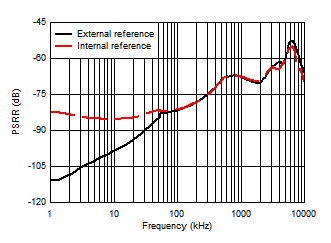SBASA78B March 2021 – September 2024 ADS7067
PRODUCTION DATA
- 1
- 1 Features
- 2 Applications
- 3 Description
- 4 Pin Configuration and Functions
- 5 Specifications
-
6 Detailed Description
- 6.1 Overview
- 6.2 Functional Block Diagram
- 6.3 Feature Description
- 6.4 Device Functional Modes
- 6.5 ADS7067 Registers
- 7 Application and Implementation
- 8 Device and Documentation Support
- 9 Revision History
- 10Mechanical, Packaging, and Orderable Information
Package Options
Mechanical Data (Package|Pins)
Thermal pad, mechanical data (Package|Pins)
- RTE|16
Orderable Information
5.9 Typical Characteristics
at TA = 25°C, AVDD = 5 V, DVDD = 1.65 V to 5.5 V, and maximum throughput (unless otherwise noted)
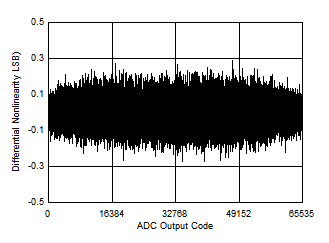
| Typical DNL = ±0.4 LSB |
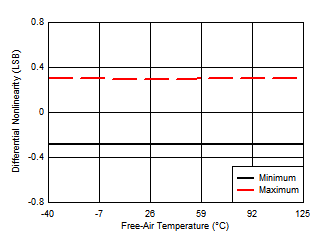
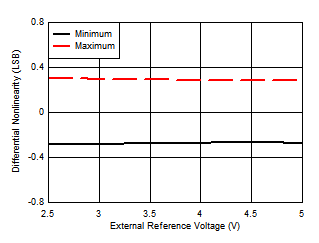
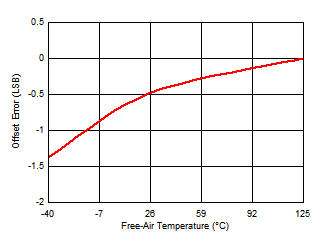
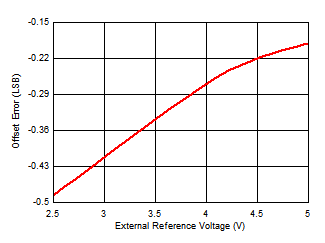
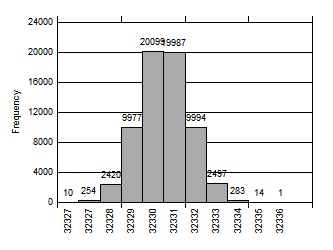
| Standard deviation = 1.05 LSB |
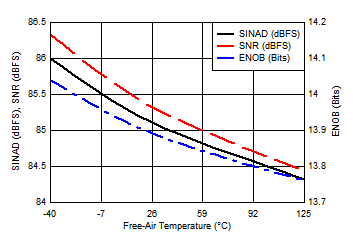
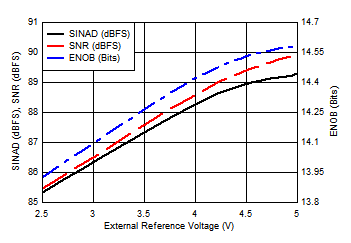
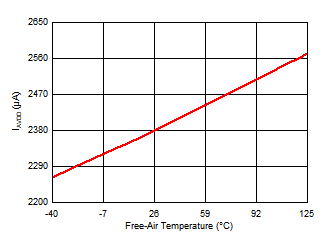
| AVDD = 5 V |
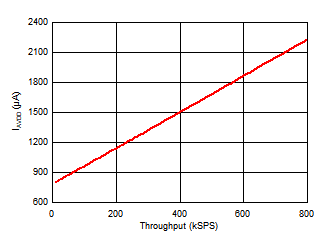
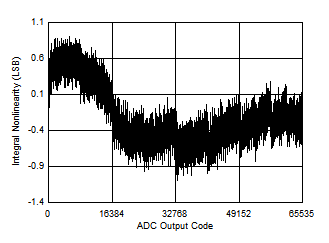
| Typical INL = ±1 LSB |
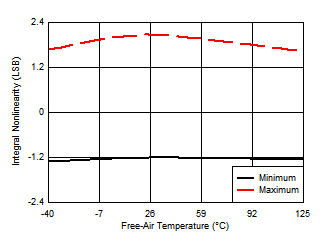
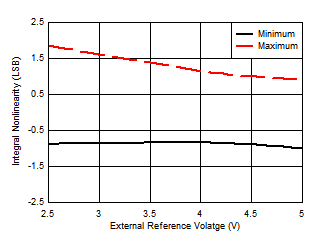
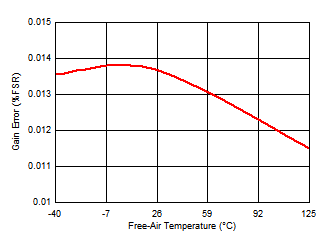
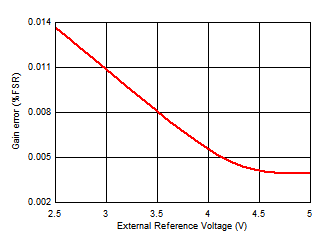
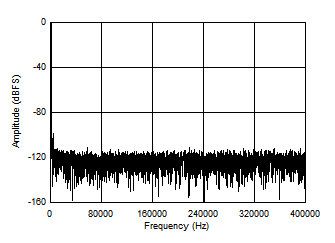
| fIN = 2 kHz, SNR = 85.3 dBFS, THD = –97 dB |
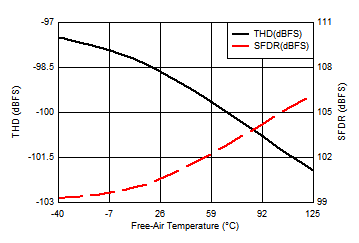
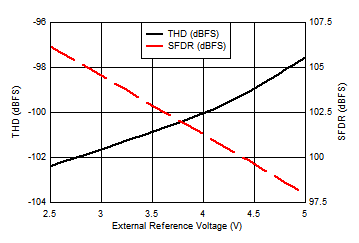
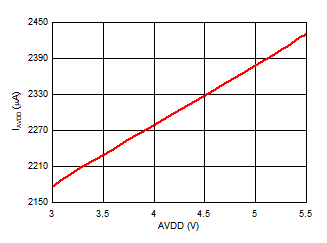
| TA = 25 °C |
